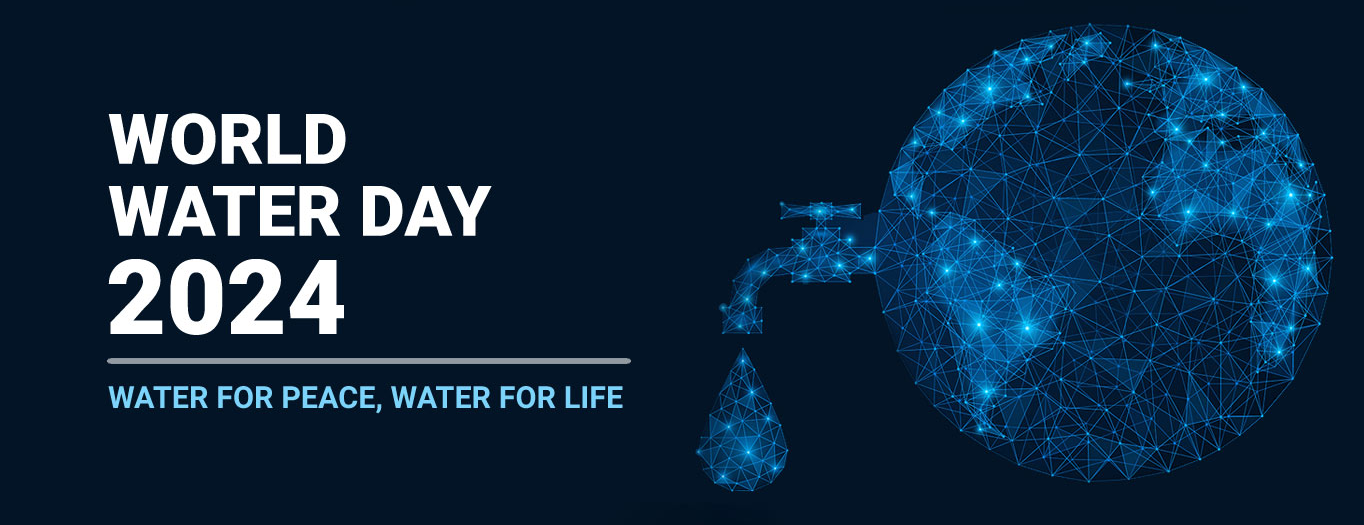
Source Image: Courtesy Andrew Thomas, Wikimedia Commons
This article is a part of the essay series: World Water Day 2024: Water for Peace, Water for Life
There are several dimensions to environmental degradation and resource depletion resulting from myopic approaches to growth and development pursued until recently, especially considering economic growth and development have been driven by factors that propel aggregate demand for goods and services. One such dimension is the scarcity of water. Another dimension refers to the losses in ecosystem services as a consequence of diverting water from its natural flow.
About 1.1 million people globally are deprived of access to water. Four billion people, i.e., almost two-thirds of the world’s population, face water scarcity for at least a month annually. Nearly 50 percent of the global population will be living in regions suffering from water scarcity by 2025. The annual per capita availability of water has dipped significantly by 75 percent, from 6,042 cubic meters in 1947 to 1,486 cubic meters in 2021. About 163 million Indians are deprived of safe drinking water.
The dual face of scarcity relates to conventional growth strategies, which fail to acknowledge the rate and level of depletion of water resources, let alone the inability to account for regional and seasonal disparities in water availability. Addressing the scarcity of water resources through their efficient and equitable spatiotemporal allocation, and tackling losses of ecosystem services can be achieved through the application of economic valuation techniques. Valuation can mediate between competing (direct and indirect human) uses of water. The intensity of ‘scarcity’ defines the kind of commodity water is. The level of scarcity determines the excludability and competition over water. While economic valuation addresses water scarcity in general, water pricing is used to tackle scarcity when water is treated as a private good.
Putting a price on water quantifies and makes visible values derived from water in a defined manner. How water pricing is used to address water scarcity is not a cut-and-dried affair. The relative inelasticity of water demand with respect to price signals requires that water prices be accompanied by other effective social measures that are known to increase the elasticity of water demand to price. In fact, the optimum price of water should include the costs incurred in service provision—operation and maintenance costs, capital costs, the resource cost of water reflecting its scarcity value, and pollution costs. The resource cost and the pollution costs account for the externalities generated by water use.
In the context of the industrial sector, corporate entities are concerned with water valuation that modifies behaviour in relation to water usage, in general, and investments, in particular. The objective is to undertake ‘true cost accounting’ that allows conserving water for the future and ‘internalises’ social and environmental externalities. Such accounting is in search of a price of water that recognises financial risks associated with higher water footprints and guides investments in water-saving solutions.
In the context of the agricultural sector, water pricing needs to be anchored in social equity (in terms of access to and affordability of water resources) and sustainability to safeguard the interests of poor farmers and female agricultural workers.
The optimum price of water is expected to ensure the viability of service provision, universal access to good quality water, and conservation and preservation of water resources. However, levying this optimum price is confronted by several difficulties. The long-run marginal cost approach to pricing water, which is reckoned as an efficient pricing mechanism relies on information about fixed and variable costs in the long run. This information in turn demands forecasts about demographics and future estimates of all kinds of water use among others. The uncertainty around the information which forms the basis of calculating water prices raises doubts on how close the calculated price is to the long-term marginal cost.
In the absence of markets for determining costs reflecting scarcity of resources and externalities, non-market valuation techniques are being applied. These techniques are prohibitively expensive and are location-specific preventing them from being applicable elsewhere.
Given that water is not just a commodity, and access to it amounts to be a human right, pricing of water becomes a politically sensitive issue. Governments may intervene to keep water prices low and pressure groups may also act for the same. Action for achieving several objectives (e.g. water conservation, equity of access to water between the rich and the poor, amongst others) simultaneously complicates the pricing of water.
All of the difficulties enumerated above have resulted in the under-pricing of water in most cases. The under-pricing of water translates into poor growth and development outcomes: low productivity, poor sanitation and disease among other consequences. Under-pricing of water is likely to entail inadequate investments in water infrastructure and technology critical for water security.
India is also being confronted by under-pricing of water that is mirrored in environmental depletion (e.g. groundwater exploitation) and degradation (increased salinity of agricultural soils). This under-pricing of water has followed perverse subsidies prevalent in India. A 2021 study on water pricing in India found that water tax rates are low, are not revised regularly, and their collection mechanisms are deficient in many ways.
There are glaring inter-state disparities in irrigation water prices, industrial water use rates and water tariffs in India.
India should put in place a water pricing system that addresses all the complex facets of water scarcity and in turn accounts for the various dimensions of water valuation. There is a need to establish a mechanism which regulates water valuation to achieve a fair and efficient allocation of resources. India should have a broader focus on reforming water pricing to achieve universal access and efficient usage of water resources, launching efforts for strengthening rights, establishing autonomous and robust institutions that are responsible for water management, and creating awareness about the severity of the water scarcity problem and the urgency to address it.
Renita D’Souza is a PhD in Economics and was a Fellow at the Observer Research Foundation.
The views expressed above belong to the author(s). ORF research and analyses now available on Telegram! Click here to access our curated content — blogs, longforms and interviews.




 PREV
PREV



